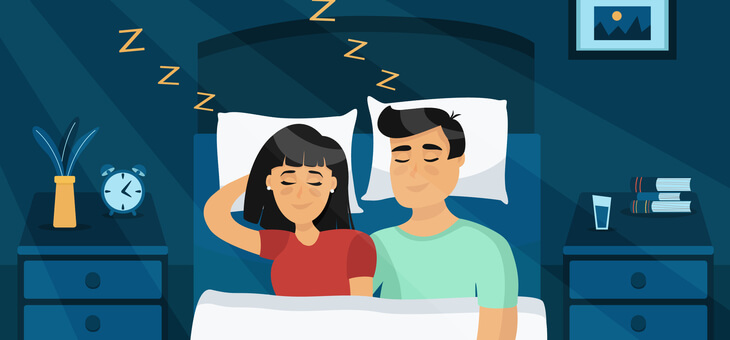A new, wearable device that can enhance our sleep has been developed by researchers.
“Wait a minute!”, we hear you cry, “you’ve been telling me for the past 15 years that my devices are hindering my sleep!”
Well, yes, that is true, as can be seen in this article we published in January.
But this is different. This is a device you put on before going to sleep and it interacts with you without you ever being aware of that fact.
Developed by the Swiss Federal Institute of Technology in Zürich (ETH Zurich), the device forms part of a system called SleepLoop, and it will play specific sounds to enhance your deep sleep phase.
Read: Concerning number of Aussies dependent on sleep aids
The deep sleep phase is important not just for the regeneration of the brain and memory, it also has a positive influence on the cardiovascular system. Deep sleep phases generally become shorter and shallower with age, so anything that can reverse this trend is likely to be beneficial.
So, what is this wearable device and how does it work? Essentially, it’s a headband, but don’t expect it to turn you into John McEnroe, Rocky Balboa or the lead singer of Loverboy in the video clip for Turn Me Loose.
Once you put it on and drift off to sleep, the device will monitor your brain activity via electrodes and a microchip. Customised software in the microchip analyses this activity in real time, and when it detects your brain is producing ‘slow waves’, which are signature of deep sleep, it activates a short auditory signal (clicking).
Read: Does your mattress really make a difference to your sleep?
This in turn helps to synchronise the neuronal cells and enhance the slow waves, thus providing you with better phases of deep sleep.
What’s more, it does all this without you ever knowing about it. You will have no awareness of hearing this sound during your deep sleep phase.
Scientists have known for some time of the benefits of introducing such sounds during deep sleep, but have been unable to manage it on a portable scale. The procedure has previously entailed an overnight stay in hospital.
But the new SleepLoop enables users to operate it themselves in their own homes – a game changer for the technology. The ETU Zurich researchers have clinically tested the device, and have published their results in the journal, Communications Medicine.
Read: Burst of creativity in sleep’s ‘twilight zone’
Participants, aged from 60 to 80, did not require any great technical proficiency to use the device. Each participant wore the device every night for four weeks. In two of those weeks, the auditory component of the device was switched on, and in the other two weeks, it was switched off.
The participants were not aware in which weeks the auditory component was on. The study demonstrated that it was possible to enhance the slow waves through auditory signals during deep sleep in most participants.
The extensiveness of the enhancement, however, varied greatly. Some subjects responded very well to the stimuli, others responded only minimally or not at all. The research will examine these individual differences to better predict how a given individual will respond to the auditory stimulus, and use their results to optimise future versions of SleepLoop.
Work is under way to develop the device further and prepare it for the clinical market. The device is expected to be available via prescription only and not over the counter.
For those whose health suffers from poor sleep, it could be a godsend.
If you enjoy our content, don’t keep it to yourself. Share our free eNews with your friends and encourage them to sign up.

